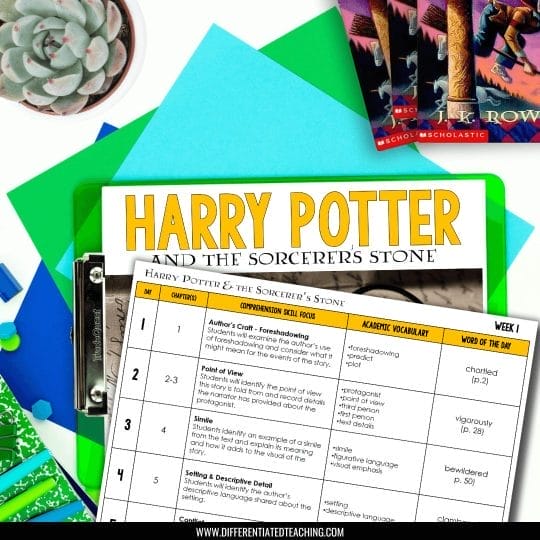Charlotte’s Web Novel Study Unit with Printable Activities
Getting ready to start a Charlotte’s Web literature circle or book club with your students? This no prep Charlotte’s Web Novel Study Unit is the perfect way to engage students with this great story by E.B. White without overwhelming them with endless lists of surface-level comprehension questions.
These activities are easy to differentiate for a whole group novel study, but they are also a great fit for literature circles or book clubs.
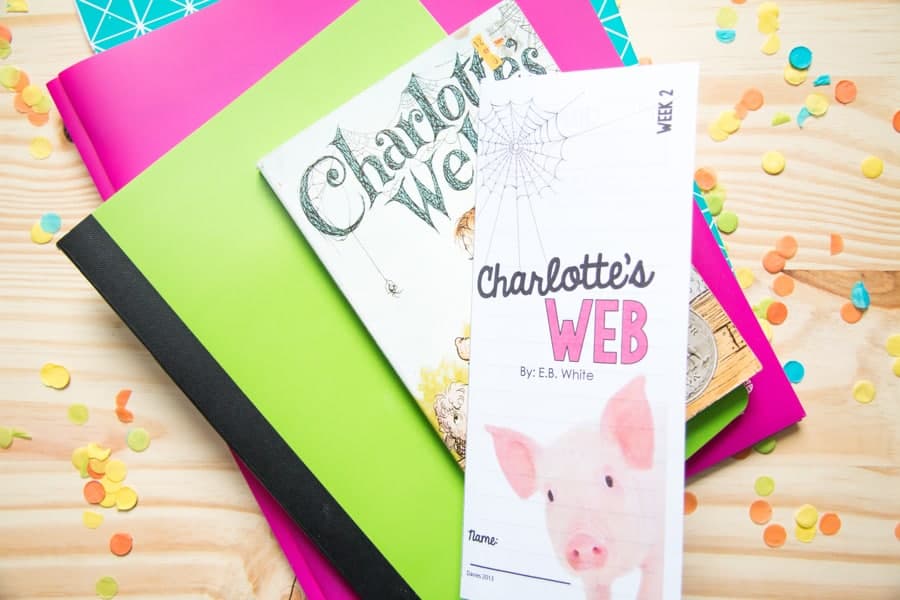
If you need a copy of the book, you can purchase Charlotte’s Web on Amazon here or get it free with KindleUnlimited. (This link is an affililate link. The book won’t cost you any more, but I earn a small commission on your purchase, which I use to maintain this site.)
What’s included in the Charlotte’s Web Novel Study Unit?
This novel study guide focuses on both comprehension and vocabulary. It includes five weeks worth of lessons and paper-saving printables including:
- Instructional guide with daily comprehension skill, objective, and key Tier 2 & text-based vocabulary
- Comprehension trifolds (provided in color and black & white)
- Reader’s Notebook Comprehension Prompts (matching trifolds)
- Word of the Day Text-based Vocabulary flip books
- Trifold answer keys for easy grading

Comprehension skills addressed in this novel study
These trifolds and notebook prompts were carefully selected to align with the text and comprehension skills that commonly require repeated practice opportunities.
The skills addressed in this Charlotte’s Web novel study include:
- Point of View
- Identifying the main idea
- Summarizing
- Visualizing using sensory language
- Making inferences
- Analyzing Text-to-self Connections
- Text-dependent writing
- Vocabulary analysis & context clues
- Cause and effect
- Problem and solution
- Author’s craft – hooks, text analysis, etc.
- Identifying elements of fiction & the fantasy genre
Each day focuses on a single comprehension skill. This was done to allow you to dive deep into the skill and ensure your students truly understand and can apply their knowledge to the text.
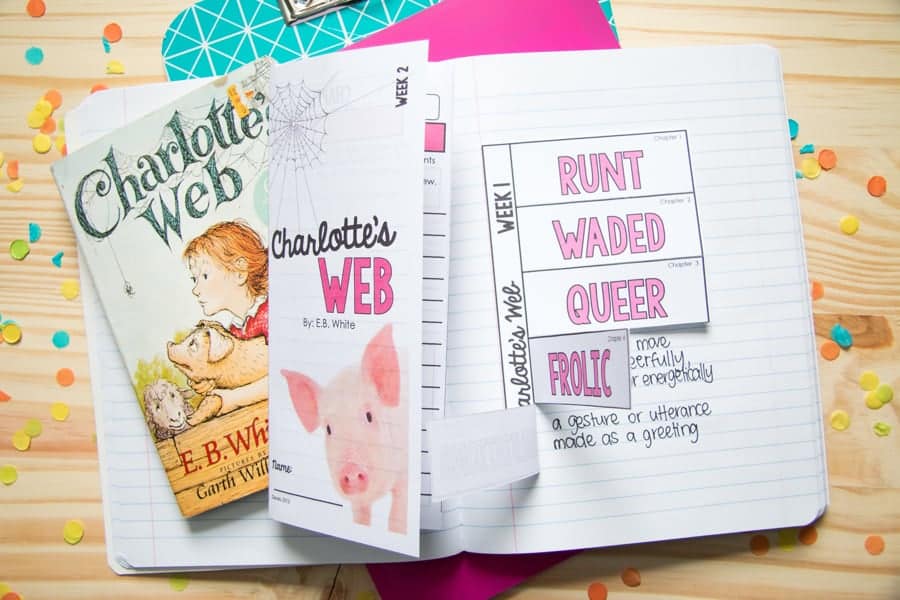
The comprehension prompts were written to encourage higher-level thinking. Students must apply the skill to generate a written response and defend their answers with text evidence.
At times, they must also explore the plot from other perspectives. This encourages creativity and helps students internalize the plot from the perspective of different characters.
This literary analysis fosters a deep understanding of the plot of Charlotte’s Web, but it also builds comprehension strategies that are applicable to other texts.
How do students practice the comprehension skills?
The daily comprehension prompts are provided in two paper-saving formats. The benefits of each format are outlined below.
The trifold format was the original design for this Charlotte’s Web novel study. Each foldable was designed to cover a week worth of comprehension using only one piece of paper.
Students are given a single question each day that focuses their reading on the daily comprehension skill.
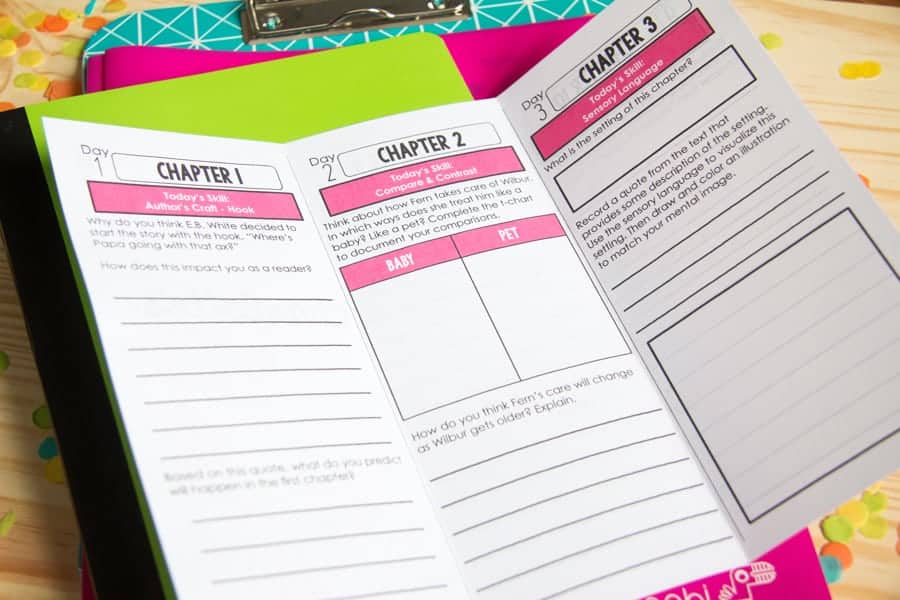
The benefit of the trifold format is that it is extremely approachable to students. Each day only takes up a third of the page, and this keeps reluctant writers from shutting down.
This also makes it easy to collect and grade. Many students use the trifold as a bookmark, helping prevent missing papers.
Want to know more about trifold novel studies? Click here to learn more about the trifold novel study format.
The Reader’s Notebook prompts are perfect for students who are advanced and need more space to provide an in depth analysis or need more space to write their response.
For advanced readers, the notebook prompts can be used to generate a longer, more detailed response to the daily prompt. This pushes the students to analyze and defend their answers.
However, the notebook prompts are also great for students with dyslexia, dysgraphia, and fine motor issues because they can be glued onto specialized paper or within a notebook to give students with large handwriting more room to respond.

Regardless of the format selected, the prompt is the same so you can easily have some students working on the trifolds while others use the notebook prompts.
What academic vocabulary is included with the Charlotte’s Web novel study?
There are over 40 academic vocabulary words included in the instructional guide for this novel.
These include general academic vocabulary and skill specific vocabulary. A sample of the included terms is shown below:
General vocabulary:
- analyze
- evaluate
- synthesize
- generate
Skill specific vocabulary:
- text-to-self connection
- summary and main idea
- context clues
- inference
Why do you include academic vocabulary?
Tier 2 vocabulary, also known as academic language, is one of the biggest barriers to student success in school. The research on the impact of academic vocabulary is clear, and we must explicitly teach these words to our students.
To make it easy, I outline key Tier 2 words for each skill. This allows you to incorporate these words into your novel study discussions.
It also means you can explicitly teach students their meaning if you are working with struggling students or English Language Learners (ELLs).
Many teachers like to pre-teach this vocabulary to help struggling students start the text on equal footing with their peers.
Teaching text-based vocabulary in Charlotte’s Web
In addition to the Tier 2 vocabulary, each day also includes a text-based vocabulary word that can be found in the day’s reading.
Some of the text-based vocabulary words included in this Charlotte’s Web novel study include:
- runt
- languishing
- summoned
- frolic
- salutations
These words can be taught using the flip book format. Designed with conserving copies in mind, this format uses one piece of paper per week.
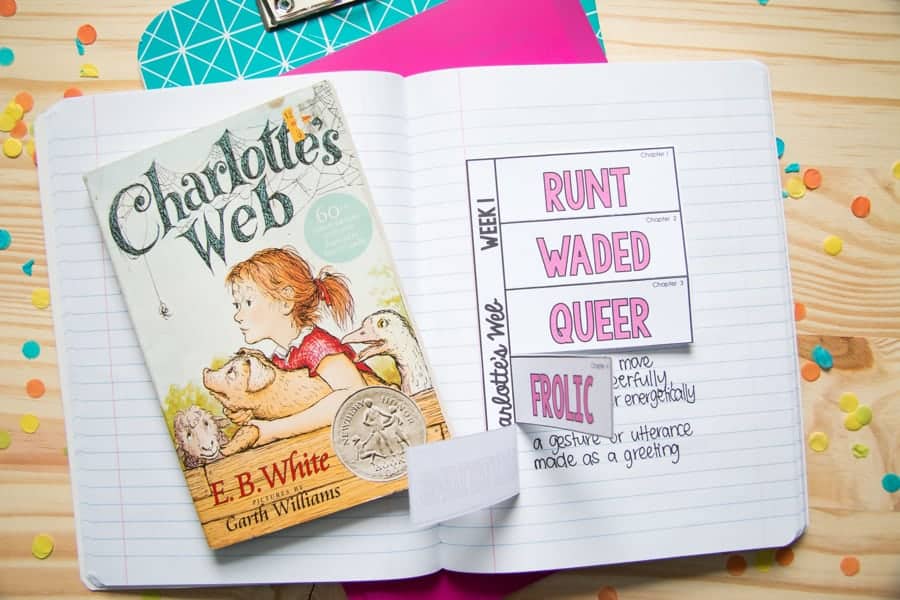
The Word of the Day Flip Book is designed for use in interactive reading journals.
To use the flip books, your students cut around the flip book, cut the tabs, and glue it into their notebook. Have students leave the tabs unglued so they can be lifted. This allows students to write under them.
Depending on your students, you can have them generate a definition of the day’s word or generate a list of synonyms and antonyms. You can even have students draw a picture of the meaning.
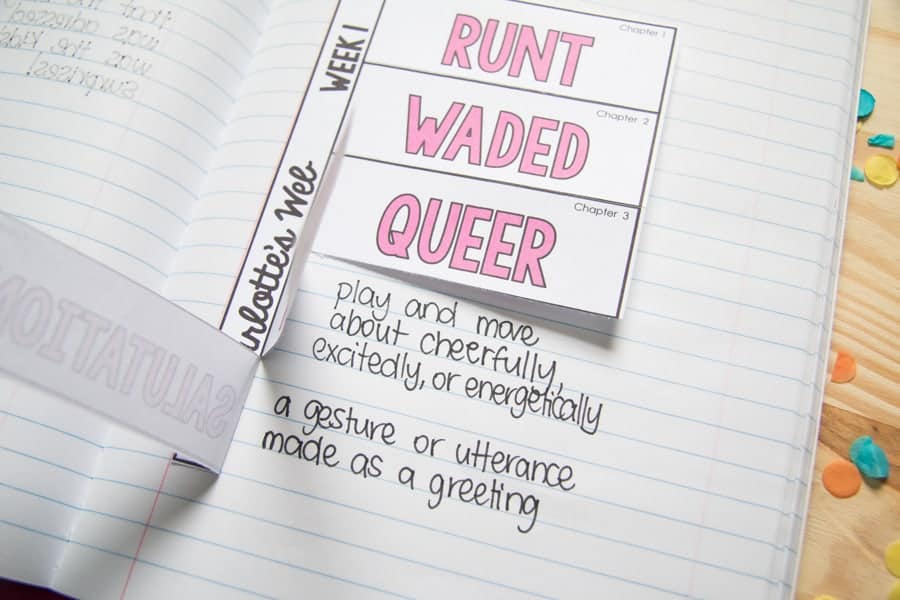
How to purchase the Charlotte’s Web novel study
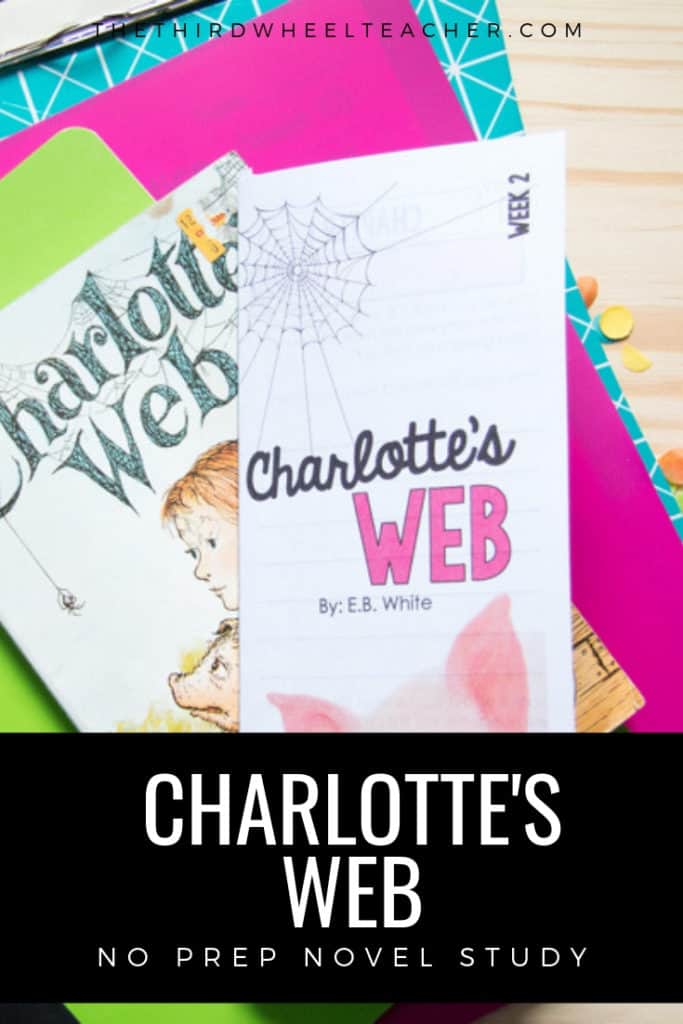
This Charlotte’s Web novel study unit can be purchased on Teachers Pay Teachers.
There are currently nearly 200 novel studies available in my store.
If you are looking for another novel and cannot find it. Please feel free to reach out.





